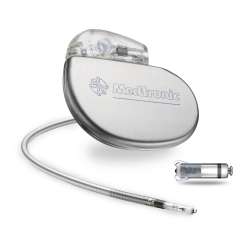In a first, world's smallest pacemaker implanted successfully in US
The world's smallest pacemaker that is as a large vitamin capsule was successfully implanted for the first time in a patient in the US to restore the heart's normal rhythm, scientists say. The pacemaker is

The world's smallest pacemaker which is as a large vitamin capsule was successfully implanted for the first time in a patient in the US to restore the heart's normal rhythm, scientists say.
The pacemaker is for patients with bradycardia, a condition characterised by a slow heart rate, usually fewer than 60 beats per minute.
The Micra Transcatheter Pacing System (TPS), recently approved by the US Food and Drug Administration (FDA), is a new type of heart device that provides patients with the most advanced pacing technology at one-tenth the size of a traditional pacemaker and is the only leadless pacemaker approved for use in the US.
"This is not a complicated procedure and the first patient that we implanted is doing extremely well," said Paul Schurmann, from Houston Methodist Hospital in the US.
"I believe this gives us another tool to help save lives of patients with slow or irregular heart rhythms," said Schurmann, who implanted the device.
The device is the size of a large vitamin, and unlike traditional pacemakers, it does not require cardiac wires (leads) or a surgical "pocket" under the skin to deliver a pacing therapy.
When a lower heart rate is present, the heart is unable to pump enough oxygen-rich blood to the body during normal activity or exercise, causing dizziness, fatigue, shortness of breath or fainting spells.
Pacemakers are the most common way to treat bradycardia to help restore the heart's normal rhythm and relieve symptoms by sending electrical impulses to the heart to increase the heart rate.
"The device is small enough to be delivered through a catheter and implanted directly into the heart, providing a safe alternative to conventional pacemakers without the complications associated with leads," said Schurmann.
"The device also allows us to automatically adjust pacing therapy based on a patient's activity levels and another positive is the battery can last up to 10 years," he said.
For patients who need more than one heart device, the miniaturised Micra TPS was designed with a unique feature that enables it to be permanently turned off so it can remain in the body and a new device can be implanted without risk of electrical interaction.
(With inputs from PTI)